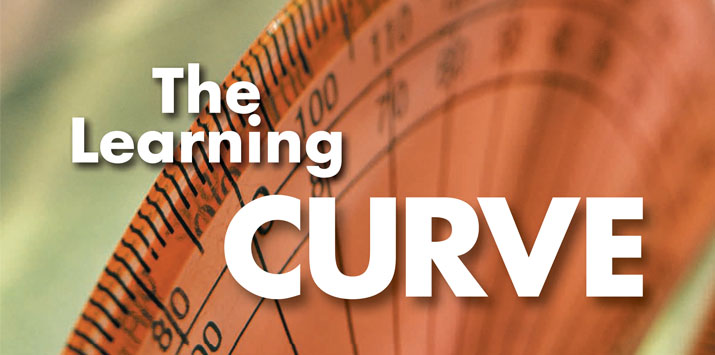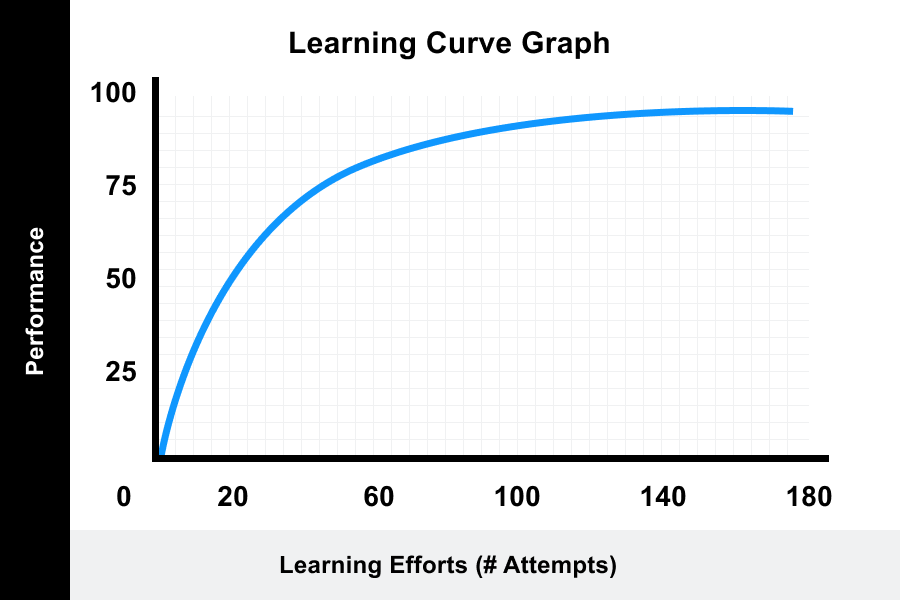THE LEARNING CURVE…Why is it important?

Now, why is this learning curve important? Why do we need to identify our own learning curve when we do tasks?
- Dhanya Bajpe
We’ve all known that in order to achieve something, one must put in effort and energy, and wait, with patience, until they bloom. However, what is this “waiting period” called?
This correlation between the efforts we put in, in order to achieve something particularly challenging, and the amount of time we take in order to achieve it, is what is termed as the “learning curve”. Now, why is this learning curve important? Why do we need to identify our own learning curve when we do tasks?
The most accurate answer to these questions would be – for greater efficiency. In order to improve one’s efficiency while completing a task, the most important aspect for one to know about their own self, is their ability to complete it within a given time, and gradually be able to decrease the time taken for that particular task. As we know, time is of utmost importance, and the ability to manage it as efficiently as possible, is one of the driving forces behind one’s success.
Now, this is where the learning curve pops in. It helps us understand our shortcomings pertaining to our management of time, while completing a task, and helps us to manage the task more fastidiously. This correlation is also represented by a graph.

This term originally came into being, from the learning curve theory, which was proposed by Dr. Hermann Ebbinghaus, in the year 1885, and was practically applied in the 1930s, by T.P. Wright, after he realized that the cost of aircraft production decreased with the increase in production performance. However, it was termed as the experience curve, instead, though it shared the same idea as the original mononym. In fact, the learning curve was described through various terms in different fields of application, one of which was the experience curve. Some of the others include cost curves, efficiency curves and productivity curves.
The learning curve ideology can be applied in various fields, right from the smallest of small, like a child writing an exam, or a test, to the advanced fields of medicine and industry, and that is exactly why we must be able to understand its relevance. The “learning” in this curve is actually a reference to the process improvement aspect. For example, in industry, the learning curve can be used to track the manufacturing costs as related to workforce performance. Instead of performance and number of attempts, the values could be unit cost or unit labor hours and cumulative production in units. Thus, labor costs can be calculated easily, and the final output is also delivered smoothly.
In order to calculate something, there should be a base mathematical formula, which can also serve as a functioning prediction tool. In the case of the learning curve, this formula is given by the equation
Y = aXb
where,
Y is the average time over the measured duration
a represents the time to complete the task the first time
X represents the total amount of attempts completed
b represents the slope of the function
The Harvard Business Review, also analyses the theory of the learning curve, and its practicality, and concludes that, “If learning has been occurring, it is reasonable to believe that it can continue, if the dynamic content of the environment remains the same.”
Yet another fascinating result of the learning theory is that, since a particular learning curve will be repeated time and again, and still yield minimal difference in the results, it can be viewed as a method by which further generations of a line of usage, can learn from. Thus, the learning curve theory helps quantifies the pattern of maximum efficiency, and helps prevent a great deal of damage to the source.





